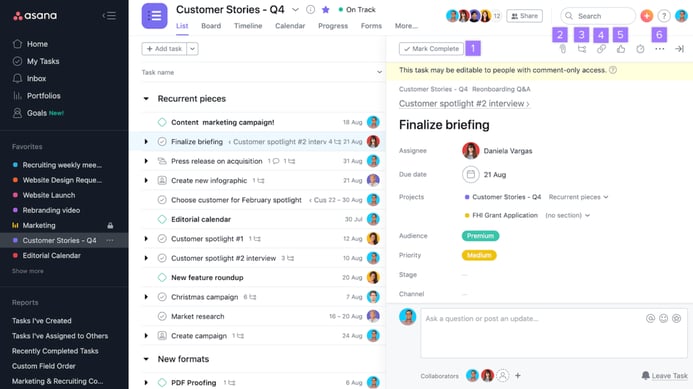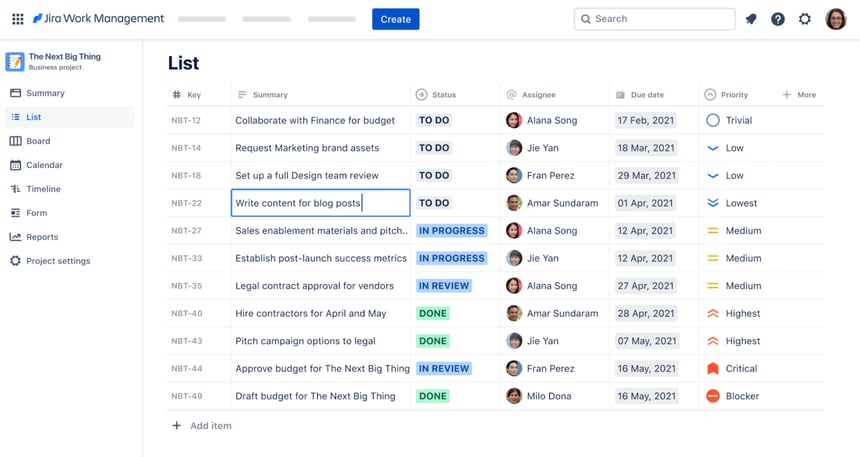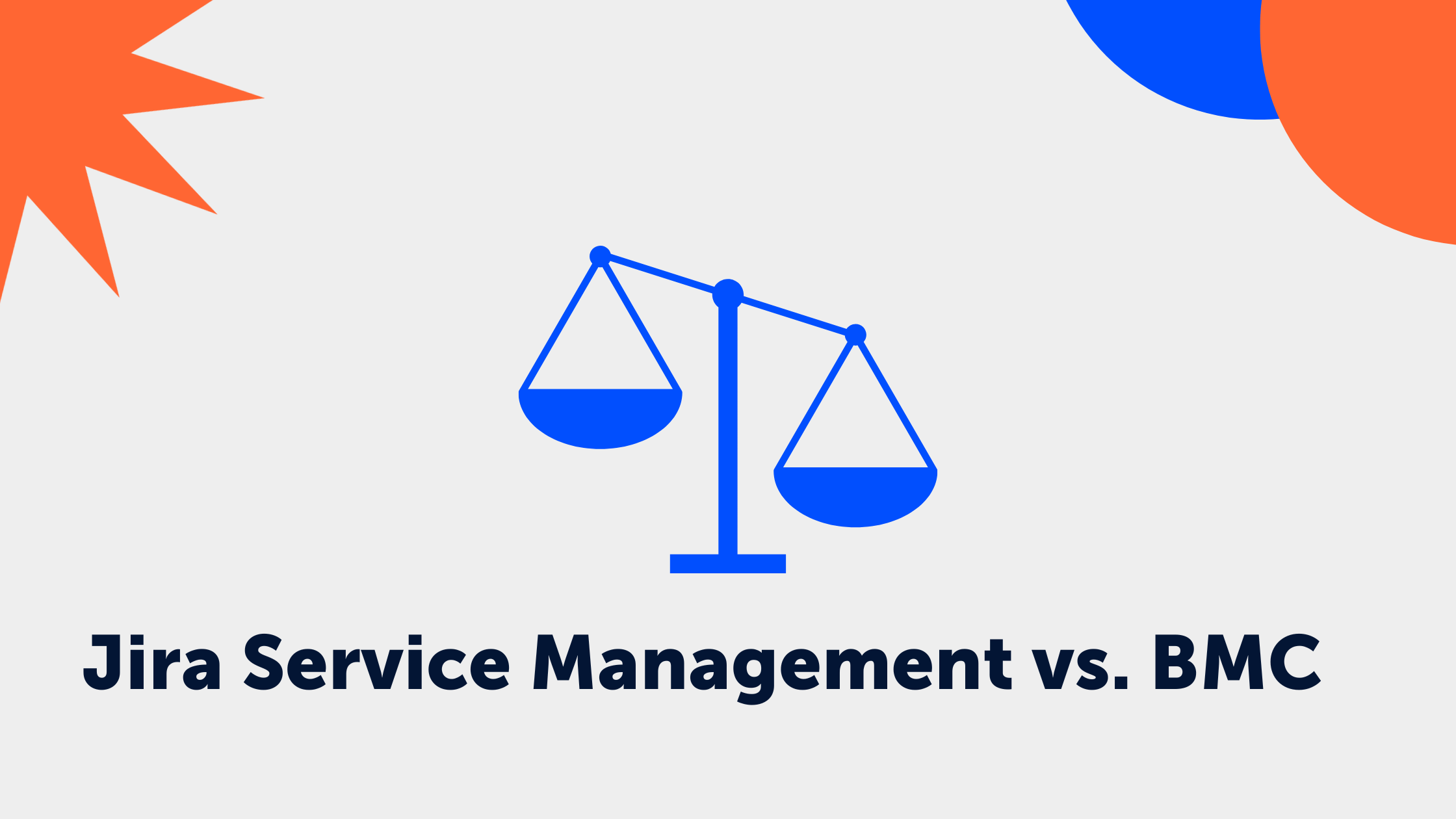5 min read
Comparing Tools: Trello, Asana, Jira, MS Project & Jira Work Management
 Alma Dizdaric
:
Mar 3, 2022 10:39:00 AM
Alma Dizdaric
:
Mar 3, 2022 10:39:00 AM
 Professional software developers are usually expert planners. They plan their workflows and tasks using tools like Jira, which gives them unique insights into the work that needs to be completed, work that requires another team to complete their tasks first before proceeding, and which teams and team members are responsible for completing set tasks.
Professional software developers are usually expert planners. They plan their workflows and tasks using tools like Jira, which gives them unique insights into the work that needs to be completed, work that requires another team to complete their tasks first before proceeding, and which teams and team members are responsible for completing set tasks.
While tools like Jira are ideally suited to tech environments, it’s far too complex for personal task management or business teams. Work management software tools seek to fill the gaps by allowing workers to plan, track, organize, and otherwise manage their daily work, bringing non-tech users into an agile work environment and enabling greater collaboration and transparency.
In this article, we will compare five popular work management software tools and evaluate each one to enable you to choose the one that best suits your needs.
What is work management software?
Work management software is a digital tool that allows employees to plan, organize and review their project and non-project tasks to improve team performance and business results. Work management software is very flexible and enables employees and managers to create their own workflows, as opposed to project management software based on rules and specific methodologies or frameworks that don’t always allow you to manage work that isn’t project-based.
Work management software allows you to track time, avoid procrastination and meet client requirements for tasks, deadlines, or costs. The software ultimately improves the entire work process and gives managers insight into how work is distributed across the company, either within projects or teams.
Comparing five popular work management tools
It’s easy to get overwhelmed looking at work management comparison sites. There are over 600 different work management tools on the market, but we’ll look at five popular options.
Trello
Trello is a popular but somewhat lightweight project management tool favored by startups and smaller teams. It’s useful for projects that need a minimal structure to stay organized. The interface includes boards, cards, and columns at the most basic level, which isn’t suitable for a more elaborate team process. Organizations that want to introduce Agile Kanban workflows will often start by using Trello.
.png?width=670&name=Trello%20(1).png)
The pros of Trello
Trello is extremely user-friendly. It can be set up in minutes and is very intuitive to use, so your team can be onboarded immediately and will soon get into the flow of things. The free version is perfectly suitable for lightweight or temporary projects and tasks
The cons of Trello
On the downside, there aren’t many options for customization, and Trello isn’t suitable for companies with elaborate workflows. The activity log and the tool’s search capabilities are restricted by its limited labeling options, making it hard to track information in the long term.
Which teams should use Trello?
Trello is ideal for simple workflows and Kanban-style projects. It’s not suited for multiple teams or Agile projects across the entire organization.
Asana
Asana was initially developed to be used by Facebook and focused on smaller teams. It’s evolved to incorporate features better known to larger organizations, like Portfolio and Workloads. Asana now allows task owners to see how tasks impact overall business goals. They plan to incorporate machine learning in future features to make intelligent suggestions to team members using the tool.
Asana is user-friendly and clean. The interface resembles Trello, which makes it suitable for Kanban-style boards, but the tool falls short for teams that prefer different visualization methods.

The pros of Asana
Asana has excellent search options, which make it easy to find tasks and files, even when there are multiple projects on the go. It also offers a view similar to a Gantt chart that allows for task dependency management.
The cons of Asana
Asana is a lot more powerful when compared to tools like Trello, but it has its limitations. Asana can only assign tasks to one individual, which doesn’t aid collaboration. Although these features are supported and available via third-party plugins, they are not suitable for scrum workflows and sprint tracks.
Which teams should use Asana?
Asana is best suited to non-software development and production teams, like marketing or art departments, that do not require Agile workflows or sprint tracking.
Jira Software
Jira is a popular PM tool utilized by larger companies that need to coordinate between multiple, complex projects company-wide. Jira can customize task workflows, and Atlassian offers Confluence as an integration, allowing teams to manage data efficiently.
.png?width=689&name=Jira%20(2).png)
The pros of Jira
Unlike Asana, Jira offers scrum workflows with sprint tracking out of the box. Jira is customizable, and project managers and companies can tailor Jira to their operations to meet their exact requirements. Hundreds of integrations are available, including Github, Salesforce, Outlook, Slack, and more, allowing teams to manage their tools and apps.
The cons of Jira
Companies that want to customize Jira and set it up to specific requirements may spend a lot of time configuring the tool and training others. It’s also a little pricey for smaller teams.
Which teams should use Jira?
Jira is a safe choice for most companies, but it’s probably unsuitable for smaller teams with limited budgets and non-complex projects. Jira is best used by technical organizations with complex projects and needs.
MS Project
According to Capterra, MS Project is used by 67% of respondents to manage projects. It looks similar to Excel, with spreadsheet-like charts and tabs. It’s not as user-friendly as the other options mentioned here and is typically used by traditional project managers.
The pros of MS Project
MS Project is very powerful with numerous customization options and full integration with Office 365.
The cons of MS Project
MS Project isn’t Agile-friendly, and because it’s been around for more than 30 years, the tool can feel dated and has a very steep learning curve. It’s also quite pricey and aimed at enterprise-level organizations.
Which teams should use MS Project?
While MS Projects has recently introduced support for Agile workflows, it’s challenging to use and should be used by more traditional PMs using the Waterfall methodology in non-IT environments.
Jira Work Management
Jira Work Management is a collaboration tool aimed at business teams like HR, Marketing, and Sales. Teams can track all activity, including approval processes, daily tasks, document creation, and more, and have a shared view of progress and responsibilities.
Jira Work Management has numerous custom views that make it easy for non-technical users to adopt. The various view options represent Excel sheets, Kanban boards, Calendars, and even Gantt charts. Users will bring in whatever tools their departments like to work with, like Gantt charts, spreadsheets, forms, and others. This allows business departments already using Jira to join their developers or ops teams, providing organizations with even greater visibility into their company and eliminating silos.

The pros of Jira Work Management
Jira Work Management is an excellent work management tool. It enables all departments to collaborate seamlessly. Creating tasks (known as “issues”) is very simple, and custom views can be created according to user preferences.
From an executive and management perspective, Jira Work Management provides great transparency across the entire organization. Using its powerful visualization tools, managers can see which tasks various teams are busy with, who the assignees are, how far the tasks are progressing and where the dependencies are.
From a user perspective, the UX/UI is intuitive and straightforward. It uses many task management tools business users are familiar with and rely on, like Calendar views and Boards similar to Trello. Teams can create workflows or choose workflows from a series of existing templates created in Jira Work Management for HR managers, Marketing teams, Sales teams, and more. Jira Work Management brings business users into the Jira universe, giving them access to the agility and insight previously restricted to software developers and other technical users. This creates a single source of truth that the organization can use to gain total transparency into all departments.
The cons of Jira Work Management
There might be some additional need for customization for those familiar with Agile views in the future. It’s probably not as useful for teams that do not need to create workflows to run their projects. Still, Jira Work Management offers an excellent foundation and will undoubtedly continue to evolve.
Which teams should use Jira Work Management?
Jira Work Management is aimed at business teams, like Legal, HR, Marketing, and others. This brings all teams from every department together in Jira. It’s ideal for organizations already using Jira Software and Jira Service Management to improve visibility and agility across their business.
Why it is essential to use a work management tool that is suitable for your needs
It’s essential to choose a work management tool that matches the complexity of your project, day-to-day operations, and your team’s level of expertise. Each tool on the market has its own pros and cons that must be considered within the business context. It’s important to look at the current PM software used and the flaws within the task and project management progress before making a purchasing decision.
venITure can help you evaluate your organization’s needs, skills, and processes to find the best work management tool on the market. Get in touch with our team to discuss your requirements and take control of your tasks and projects right away.


